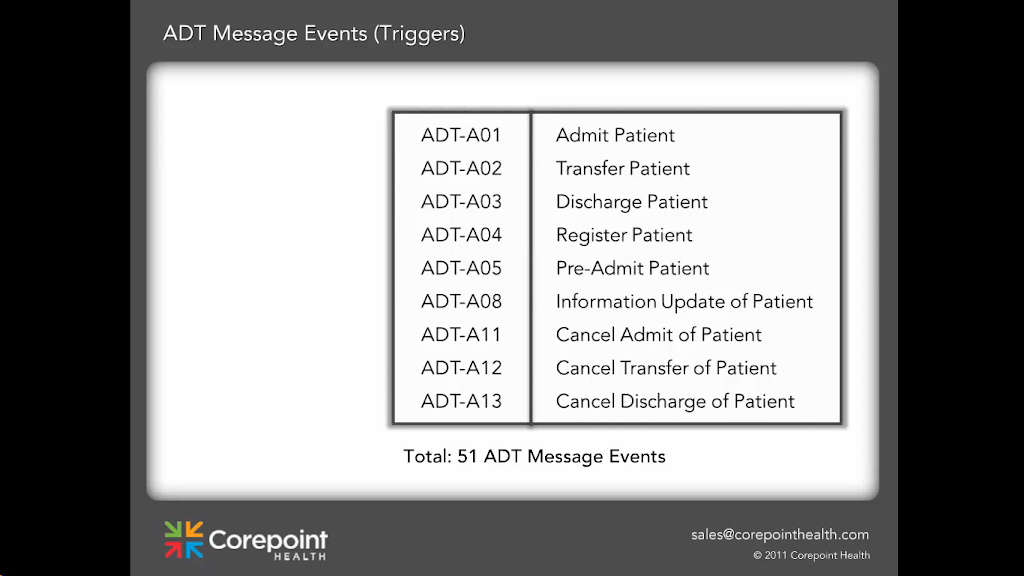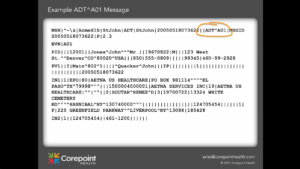Yesterday’s post regarding the purpose and the usage of CCD and CCDA documents are based on the current existing scenario of how things are been used in the recent days.
The current Healthcare environment involves the process of obtaining the data of the patient from the clinics/hospitals or those which have been referred by other physicians, whatever maybe the source of fetching the data, at the end of the day the expectation is same “DATA”. With US healthcare precisely every patient’s data is money.
Let’s focus on How, When, Where these things happened?… Let’s draw-back the time to learn in simple ways of these Healthcare documentation origins, their purposes and needs.
Let me begin this post with the traditional HL7 messages
HL7 is a set of collectively composed international standards, being set for various kinds of health messages/documents that is being used by various health organizations including small clinics, hospitals, labs and other clinical sources.
The term HL-7 stands for Health Level -7 representing standards of message being provided. The interesting point to note here is y 7? It could have been any number right?… well all for a reason. These electronic health data/messages/reports can be taken from any clinical environment and can be used with any other environment with various software being used as a interface in-between so basically 7 represents the OSI model layer 7, that is these data are retrieved from the software running on Application layer of the OSI model . Hence the name HL-7
The HL-7 message are of various versions, Depending on the need or the flexibility of the healthcare environment HL7 message versions are used. At present there are 2 versions of messages
1. Version 2 (pipe-lined)
2. Version 3 (generic XML)
3. CCD/CDA/CCDA
Version 2:
The HL7 v2 will have the following sections
1.Patient Administration (ADT)
2.Orders (ORMs)
3.Results (ORUs)
4.Charges (DFTs)
ADT stands for Admit Discharge transfer, it provides three important information:
1.Patient Demographics
2. Visit Information
3. why the message is being sent
The patient Demographic details, Demographics in the sense it provides all the Essential information of the patient such as His name, dob, address, guardian, guardian information, next of kin etc. All these information are identified in the HL7 V2 message using specific contents.
There are 51 different types of ADT message events as shown in the figure below with multiple purpose
like ADT 01 provides the admitted patient information and so on..
Within the patient Demographics information we have various informations on the patient such the message can be identified by its purpose by reading the messages, here is the sample HL7V2 msg.
The PID section holds the patient’s contact information, the PV1 section holds the patient visit information The MSH section is an essential section which denotes the purpose of the message here the purpose of the message is crystal clear, (i.e) it gives information about the patient who is been admitted . The INI section provides the patient’s primary and secondary insurance information.
ORM messages (orders):
http://www.corepointhealth.com/resource-center/hl7-resources/hl7-orm-message
The above link will provide all the essential details about the ORM messages.
The HL7 ORM-O01 message functions as a general order message that is used to transmit information about an order. There is only one type of ORM message – the ORM-O01 message. Trigger events for the ORM-O01 message involve changes to an order such as new orders, cancellations, information updates, discontinuation, etc. ORM messages are among the most widely used message types in the HL7 standard.
An order can be defined as a “request for service” that is sent between applications, or in some cases within a single application (an application can send orders to itself). An ORM message is composed of segments and groups of segments, each of which may be required, optional, repeatable, or a combination of these.
Sample HL7 version 2 ORM message:
MSH|^~&|HIS|MedCenter|LIS|MedCenter|20060307110114||ORM^O01|MSGID20060307110114|P|2.3
PID|||12001||Jones^John^^^Mr.||19670824|M|||123 West St.^^Denver^CO^80020^USA|||||||
PV1||O|OP^PAREG^||||2342^Jones^Bob|||OP|||||||||2|||||||||||||||||||||||||20060307110111|
ORC|NW|20060307110114
OBR|1|20060307110114||003038^Urinalysis^L|||20060307110114
ORU messages:
The HL7 ORU-R01 message transmits observations and results from the producing system/filler i.e. LIS, EKG system) to the ordering system/placer (i.e. HIS, physician office application). It may also be used to transmit result data from the producing system to a medical record archival system, or to another system not part of the original order process. ORU messages are also sometimes used to register or link to clinical trials, or for medical reporting purposes for drugs and devices.
Types of observations reported in the ORU-R01 message include:
1.Clinical lab results
2.Imaging study reports
3.EKG pulmonary function study results
4.Patient condition or other data (i.e. vital signs, symptoms, allergies, notes, etc.)


